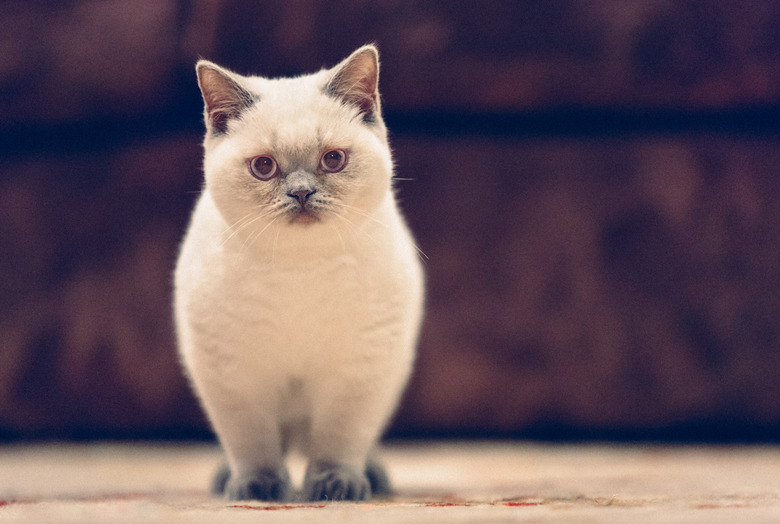Types Of Short-Haired Gray Cats
No matter their breed, cats resemble living works of art. The finest human dancer can't compete with the natural grace and agility of the feline. It's not coincidental that many of the great artists have also been cat aficionados. Artists are often seen as independent and non-conformist, and that description certainly doesn't apply to dogs.
While cats appear in a palette of colors, there's something special about a gray feline. Of course, gray is just a generic term when it comes to cat color. Many gray cats boast coats of blue and silver. Purebred short-haired gray cats often have a coat more dense than that of a randomly bred gray feline.
Russian blue
Russian blue
Perhaps the best-known of the short-haired gray cat breeds, the Russian blue combines a muscular frame with true elegance. Cattime refers to the breed as "the Doberman pinscher of cats." His dense, dark gray coat requires a good combing at least twice weekly. The Russian blue is generally sensitive and shy, not fond of strangers but devoted to his person.
The Korat
The Korat
The Korat originally hails from Thailand, where it was considered a symbol of luck. At maturity, they are relatively small, weighing between 8-and-10 pounds. Along with their single gray coats, the Korat sports a distinctive heart-shaped head. Their bodies are powerful and muscular.
Korats love their people. If you are looking for a "Velcro" cat, a Korat is a top choice. They are smart and active and need lots of attention. Korats like the company of other Korats, but if there are other felines in the house, expect the gray cat from Thailand to rule the roost.
The Chartreux
The Chartreux
Although the breed's name is French, this cat dates back to the Persian Empire. Knights returning from the Crusades brought these cats to Europe, and many of these felines ended up in French monasteries as rodent patrol. As Catster notes, today the Chartreux is the national cat of France. Along with a lovely blue coat, the breed is known for the permanent "smile" affixed to the face.
The Chartreux is a large cat, weighing up to 16 pounds when full-grown. The muscular body is somewhat out of proportion with the breed's relatively thin legs. They bond quickly with their people, follow them around, and are born lap cats. Although the cat's hair is short, it is double-coated, so regular grooming is a must.
The Nebelung
The Nebelung
Strictly speaking, the Nebelung is a medium-coated rather than short-haired breed but makes a good choice for someone who wants a striking gray cat whose coat doesn't require the type of upkeep necessary for long-haired animals. It's a relatively new breed, in existence only since the 1980s. The Russian blue is the foundation for the Nebelung breed. Many Nebelungs look and behave much like their Russian blue ancestors.
While the Nebelung is medium-sized, its body is exceptionally long. The tips of their bluish hairs are silver, giving them a luminosity and mystical quality. Playful and active, the Nebelung quickly becomes a member of the family, although the breed is not usually fond of strangers. While good with older children, the Nebelung is likely to hide when little kids are around.
The British shorthair
The British shorthair
While the British shorthair is available in various shades, gray is the most common color. World War II greatly affected the purebred breeding program, so post-war cat fanciers bred Russian blue with domestic shorthairs to help recreate the British shorthair. The result is a medium-to-large cat with dense, soft fur. The British shorthair boasts a strong, compact body, and weighs up to 18 pounds when full-grown.
Not the most active of cats, the calm British shorthair makes an excellent companion. They make good family pets, as they are fine with well-behaved children and dogs. Their body type and relatively sedentary natures mean they can easily become fat, so it's important to ensure they don't overeat.
